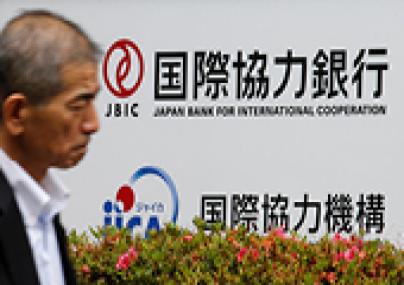
2015 is slated to be the year when the ASEAN Economic Community (AEC) kicks off, and the Southeast Asian economic bloc looks all set to drive offshore growth, finds Chris Horton
The acronym AEC may not yet mean much to many people outside of Asia, but for those doing business here, they hail the exciting prospect of a new market that, if realised, will dramatically alter the business landscape in the Asia Pacific region.
Scheduled for launch at the end of this year, the AEC – or the ASEAN Economic Community – will liberalise regional trade by removing barriers to the movement of people, goods and services among the 10 member states of the Association of Southeast Asian Nations (ASEAN).
The AEC will come at an interesting time. Singapore is beginning to outshine long-time rival Hong Kong as a regional finance hub and source of capital. Indonesia, Malaysia, Vietnam and the Philippines are posting strong growth figures. Even “frontier states” including Myanmar, Cambodia and Laos are coming in from the cold and becoming increasingly connected with their wealthier neighbours.
The ramifications of the formation of a Southeast Asian economic bloc that can compete with its giant neighbours China and India, as well as the US and EU, will take years to become apparent. But the impact of the coming launch of the AEC is already being felt in boardrooms around the world.
It is also being felt in ASEAN itself, of course, where more companies, be they local or foreign, are looking at the opportunities that lie in neighbouring markets. Plans are already underway to create new trade corridors, for example, building up transport infrastructure and manufacturing capacity in Cambodia to link existing industrial nodes in Thailand and Vietnam.
As connectivity improves, supply chains won’t be the only areas of the regional economy to benefit, as new sectors such as e-commerce will receive helpful boosts as well. Such developments will unlock new opportunities in a region that has only recently entered a new period of peace and stability.
By upgrading both ASEAN’s internal and external profile, the AEC will require a growing number of sophisticated offshore vehicles to compete at a global level. The services of offshore legal counsel will be crucial to the realisation of this goal, providing established offshore legal firms with what should be fertile ground for growth beyond the short term.
Hidden Giant
More and more companies are adjusting their plans for ASEAN away from a state-by-state approach to a more holistic strategy that views the AEC as one market. And when viewed in those terms, what a market it is.
Almost one in 10 people in the world live in ASEAN, which collectively is growing only slightly slower than China and India, while leaving the rest of the BRICS countries in the dust. It’s not growth from a low base-point, either. At present, the upcoming AEC would rank as the world’s fifth-largest economy.
This has set the stage for a boom in financial and legal services that will piggyback on increasing M&A activity and economic expansion. Many firms are already busy serving this up-and-coming region.
“Offshore firms generally provide legal services to the region via a Singapore or Hong Kong office presence with client and marketing trips being made to the individual ASEAN countries during the course of the year,” says Michael Gagie, managing partner of Maple and Calder’s Singapore office. “There is increasing demand within the region for offshore legal services and healthy competition amongst the offshore law firms to provide it.”
“We are delighted with the way in which the opening of our Singapore office in 2012 has enabled us to further our client relationships with the ASEAN countries and to increase the level of our understanding of the region,” Gagie adds.
Other firms also see a region brimming with opportunity.
“ASEAN continues to be an important region for offshore legal counsel and we have historically played a role in foreign inward investment as well as trade and access to capital markets, using offshore vehicles,” says Frances Woo, group chairman at Appleby.
“As ASEAN has grown in importance so too has ASEAN as a target market for our clients and as a source of work for us,” Woo adds. “The larger offshore firms generally see the ASEAN region as one that is easily serviced from a hub office in Hong Kong and possibly complemented by a presence in Singapore or in Mainland China. We have very successfully serviced the ASEAN market for over 25 years now, largely from Hong Kong.”
Alan Dickson, director and head of the Singapore office of Conyers Dill & Pearman described ASEAN as an important market for offshore legal counsel and a market that is already familiar with the benefits of offshore vehicles.
“The demand for offshore legal services in ASEAN remains strong,” Dickson says. “We continue to see offshore structures used routinely when ASEAN companies seek to access international capital and when cross-border investments are made within ASEAN. Business families operating in Asia who hold assets overseas are also very familiar with the advantages to be gained through use of offshore holding structures for such assets.”
“As complex transactions with offshore connections continue in ASEAN, we continue to see room for growth in demand for offshore legal services in the region,” he adds.
Back to topCounting Down
The run-up to the launch of the AEC at the end of this year will be a busy one for the 10 national governments involved, as well as the ASEAN secretariat. Few expect all of the launch targets to be met when the time arrives. Regardless, much progress has been made by member states in eliminating most tariffs, yet much remains to be done in terms of non-tariff barriers. Nonetheless, it seems the pump is being primed for an initial period of dealmaking and consolidation that should increase regional efficiencies and competitiveness.
“The AEC is an historic event for the ASEAN region, offering an opportunity for ASEAN economies to evolve together into a significant global economic power,” says Dickson.
“Cross-border investments and transactions are bound to increase with the knitting together of the ASEAN economies,” he adds. “Based upon our knowledge of the existing offshore structures that have been used in the ASEAN region when economic borders have been more closed, we expect an increase in demand for those structures as those borders become more hospitable to inter-region transactions.”
That demand will be partially fuelled by the strong growth ASEAN is currently experiencing, in spite of the lacklustre showing in 2014 by Thailand, one of the region’s largest economies.
“ASEAN saw its GDP growth for 2014 finish at 4.9 per cent outpacing the world's GDP growth of 3 per cent,” says Appleby’s Woo. “We expect to see this trend continue given its large labour force and growing middle class. We also expect to see deeper collaborations with domestic ASEAN and other foreign firms as they develop their presence.”
The 10 ASEAN member states are all quite different from one another, with different strengths and weaknesses. Development levels also vary widely. These factors will determine where offshore legal counsel will tend to be in demand when AEC launches.
“Some of the ASEAN region is relatively mature – Singapore, for example – but elsewhere – Vietnam and Myanmar, for example – we expect to see more activity as these regions become more robust and confident environments for international investment activity,” Woo notes. “With this comes greater sophistication in the delivery of legal services and an enhanced understanding of complex transactions is expected.”
“Certainly our experience is that the market is in growth mode,” Woo adds. “Appleby has historically had strong ties with the foreign firms and equally with the domestic ASEAN firms in tandem with their growth trajectory. As both sides develop in greater alignment, this will further add to our growing and strengthening relationships.”
Of course, the regional sea change promised by AEC will not be realised this year, but notions of ASEAN’s short-term potential are gradually coming in line with the fact that on the ground, things will continue to change as 31 December approaches.
“As you would expect, in order for us to see increased activity in terms of demand for our services, there needs to be an increase of economic activity necessitating the use of structures involving offshore entities, for instance, for borrowing or for investment purposes, which then require offshore advice,” says Gagie. “I don't think we expect the launch of the AEC itself to affect deal flow but we do hope that its launch will result in increased economic activity for the region.”
Back to topAlready Demand
As things stand now, there is already demand among all ASEAN members for offshore legal services.
“Offshore structures remain very widely used in the region, particularly BVI and Cayman structures,” says Nathan Powell, a partner at Ogier’s Hong Kong office.
“These tax neutral jurisdictions are have highly regarded courts and legal system, flexible and pragmatic regulatory regime and are known for their high-quality lawyers, accountants, advisors, and other service providers in both the BVI and Cayman Islands themselves as well as here in Asia,” Powell says. “We see Cayman used very heavily for funds as well as IPO's and pre-IPO investments in the region. BVI tends to be used a lot for bonds and financing work generally.”’
Powell’s colleague and head of finance at Ogier’s Hong Kong office, Anthony Oakes, says: “We have seen an uptick in M&A work in the last six months with much of this work involving BVI or Cayman entities. We have also been advising on a large number of bond issues with BVI or Cayman being very popular choices of jurisdiction for the issuer.
Naturally, some countries and sectors are displaying more robust demand than others.
“All ASEAN countries have provided transactions requiring offshore advice,” Gagie says. “Historically, Singapore, Indonesia and Malaysia have provided a lot of deal-related activity, but other countries in the region are also active. Over the past 18 months, the most active sectors for us have been finance and private equity.”
Given the region’s dynamism and considering that several of its economies have only recently come online with regard to global markets, some of these newer players offer the possibility of long-term sustained growth, which should drive demand for offshore legal counsel.
“Countries such as Vietnam and Myanmar present opportunities in addition to the more familiar and larger markets in Indonesia, Malaysia and Thailand,” says Woo. “There is definitely an uptick on the horizon and offshore structures via Mauritius, BVI, Bermuda, Cayman and Seychelles are popular. The activity crosses all sectors, but as you would expect there is a larger percentage of financial services activity than many other sectors and maritime/transport/infrastructure is particularly strong in this region.”
One positive aspect of ASEAN in general is that because it is already familiar with the benefits of offshore finance, it does not require much in terms of educating the market, as was the case in nearby China not long ago.
“We see offshore structures used in a broad range of industries in ASEAN countries, with such diverse industries as financial services, commercial property investment, health care, shipping and resource industries all making use of offshore structures to access international pools of capital and to hold cross-border assets,” says Dickson.
“Businesses in Indonesia, Singapore and Malaysia are particularly active,” Dickson adds. “We do not see any particular industry as the front runner in this activity and believe that such a broad based use of offshore structures indicates the main stream acceptance of the advantages of offshore structures among diverse industries.”
Back to topChina Factor
China’s runaway growth has slowed down significantly, but owing to its size and its growing business and investment presence across ASEAN, it is still a major source of demand for offshore services in the region. As ASEAN’s biggest trading partner, it shouldn’t be surprising that many offshore firms use their Hong Kong and mainland China offices to serve ASEAN at the moment. This approach should be less common after demand for offshore legal counsel reaches a tipping point, pushing firms to open new offices in Singapore or elsewhere in the region.
“Our role on transactions involving ASEAN countries tends to be very similar to our role on Chinese or other international deals,” says Maples & Calder’s Gagie. “We work with onshore lawyers and other advisers of the client to achieve the client's objectives in terms of structuring and execution of a transaction. We are very much part of a larger deal team.”
Given that ASEAN is a collection of wildly different regulatory regimes as well as languages, customs and cultural norms, it contrasts with China’s highly centralised system.
“ASEAN, although established since 1967, still consists of 10 member countries that have varying requirements and different regimes, from a legal, regulatory, financial, political perspective and otherwise,” says Woo of Appleby. “There are also significant cultural and language differences as well and all of these factors taken together mean that ASEAN requirements differ greatly from China. The levels of understanding of the role of offshore in international and regional transactions can differ greatly requiring offshore legal counsel to have a strong appreciation of the local background and dynamics at play.”
Woo notes that while Singapore is very accustomed to offshore and understands the sophistication and complexity, there are other ASEAN member countries such as Myanmar and Laos that may not have similar levels of understanding or exposure. That said, China is not as homogenous a market as some outsiders might tend to think.
“China is a much larger market and has grown significantly in its use and appreciation of offshore particularly given the size and volume of outbound deals over the years,” Woo says. “However, China can equally be diverse particularly in the non-coastal and less developed regions.”
China has also kept a relatively open attitude to offshore vehicles, an attitude that is not mirrored by all of its neighbours to the south. As China and ASEAN business ties continue to deepen, Chinese influence could be one factor pushing governments toward a greater understanding of the advantages offered by offshore.
“Chinese policy to date has not discouraged the use of offshore structures,” says Dickson of Conyers, Dill & Pearman.
“Chinese businesses have embraced the neutrality, flexibility, certainty and efficiency that offshore holding company structures offer to them in accessing international capital and in financing and trading transactions,” Dickson adds.
“Certain ASEAN countries restrict their citizens and businesses from investing externally, whether for reason of exchange control or simply out of central policies to control business activity and investment flows. To this extent, some ASEAN countries do have institutional impediments to efficient capital flows, and these do represent a significant difference from Chinese economic policy.
Beyond 2015
The AEC is intended to create a legal regime to unify ASEAN into a single market, economy and production base leading to a freer flow of goods, services, investment and skilled labour across the region.
Woo notes that, should this vision be achieved more or less on schedule, some forecasts see the AEC as generating 14 million jobs by 2025 and improving the livelihood of 600 million people across the 10 ASEAN member countries and the GDP growth of the region as a whole rising to 7.1 per cent, contrasted to ASEAN GDP of 4.9 per cent in 2013.
“This development could lead to greater opportunities for growth and prosperity in ASEAN with growth in trade, transportation and construction being the major sector beneficiaries,” Woo says. “If trade and services are to liberalised, then we see offshore activity as adding significantly to the economic performance of the ASEAN region and enhancing its attractiveness and competitiveness.
Offshore stands to gain much from an AEC that can punch its weight on the world stage alongside similar-sized markets in the East and West. It should also see an uptick in business on the back of growing intra-ASEAN M&A activity as well as trade.
“The US commits one third of its investments in Asia to ASEAN, which is significant, and through the AEC, we see this as being further enhanced,” Woo notes. “If the AEC promotes its member states according to its blueprint, investment, business and cross-border trade will increase and become more confident, bringing economic prosperity to the region and the consequential transactions and management of private wealth that surround this. Offshore will play an important role in this development and assist in intermediating financial transactions both within the region and between the region and the US, EU and China.”
Although there is much reason for optimism for the AEC in general, offshore firms are generally taking a somewhat long view of the prospects in general, while making sure they seize the opportunity today to lay down a foundation for future demand growth across ASEAN.
“In the short term, we don’t expect any significant impact from AEC on demand for services from offshore legal counsel,” says Dickson. “However, over the medium to long term, if the economies in ASEAN integrate more fully, we do expect to see more cross-border investment and trade. To the extent this occurs, we would expect that AEC’s impact, in the medium to longer term, will result in an increase in the demand for offshore legal services in the region.”
There is little doubt that the AEC will experience growing pains in its early years as an economic bloc, but this is only natural with 10 very different stakeholders that each have their own particular domestic concerns to address. But it is early days and progress has been substantial. As the saying goes, Rome wasn’t built in a day. Neither was the European Economic Community, but its existence today after decades of wrangling, disagreement and compromise, points a way forward for Southeast Asia.
Back to top


